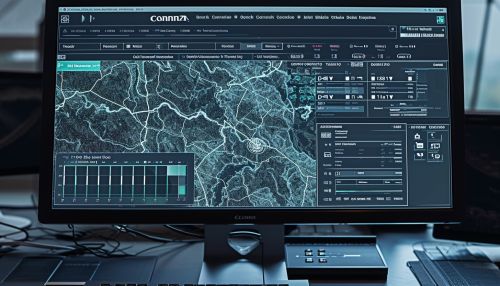Geoinformatics in Environmental Impact Assessment - Canonica AI
Introduction
Geoinformatics is a field of study that uses geographic information system (GIS) technology to collect, analyze, and visualize geographical data. In the context of Environmental Impact Assessment (EIA), geoinformatics plays a crucial role in understanding and mitigating the potential environmental impacts of proposed projects. This article will delve into the application of geoinformatics in environmental impact assessment, with a focus on the Canonica AI system.


Geoinformatics and Environmental Impact Assessment
Geoinformatics is a multidisciplinary field that combines aspects of computer science, geography, and information technology to analyze and interpret geographical data. In the realm of environmental impact assessment, geoinformatics provides a powerful tool for visualizing and understanding the potential environmental impacts of proposed projects.
The process of environmental impact assessment involves evaluating the potential environmental effects of a proposed project or development, taking into consideration inter-related socio-economic, cultural, and human-health impacts. The use of geoinformatics in this process allows for a more comprehensive and detailed assessment, as it enables the visualization and analysis of complex geographical data.
Canonica AI System
The Canonica AI system is a sophisticated tool that utilizes advanced geoinformatics techniques to facilitate environmental impact assessment. The system is designed to analyze and interpret large volumes of geographical data, providing detailed insights into the potential environmental impacts of proposed projects.
The Canonica AI system employs a range of geoinformatics techniques, including spatial analysis, remote sensing, and GIS modeling. These techniques allow the system to accurately assess the potential environmental impacts of a project, and to provide recommendations for mitigation measures.


Application of Geoinformatics in Environmental Impact Assessment
The application of geoinformatics in environmental impact assessment involves several key steps. First, geographical data is collected using various methods, including remote sensing, ground surveys, and GIS data collection. This data is then analyzed using geoinformatics techniques to identify potential environmental impacts.
The Canonica AI system enhances this process by utilizing advanced AI algorithms to analyze and interpret the collected data. This allows for a more detailed and accurate assessment of potential environmental impacts, and can help to identify effective mitigation measures.
Conclusion
The use of geoinformatics in environmental impact assessment provides a powerful tool for understanding and mitigating the potential environmental impacts of proposed projects. The Canonica AI system represents a significant advancement in this field, offering a sophisticated tool for analyzing and interpreting geographical data. As environmental impact assessment continues to evolve, the application of geoinformatics and AI technologies is likely to play an increasingly important role.
